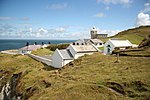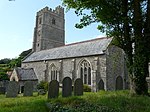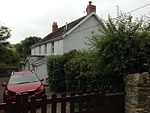St Mary's Church, Mortehoe
Church of England church buildings in DevonGrade I listed churches in Devon

St Mary's Church, Mortehoe, is a Grade I listed Church of England church in Mortehoe, Devon, England, whose origins date back to the Norman Conquest. It retains many original medieval features, including a notable tomb containing the remains of Sir William de Tracy.
Excerpt from the Wikipedia article St Mary's Church, Mortehoe (License: CC BY-SA 3.0, Authors, Images).St Mary's Church, Mortehoe
Mortehoe Station Road, North Devon Mortehoe
Geographical coordinates (GPS) Address External links Nearby Places Show on map
Geographical coordinates (GPS)
| Latitude | Longitude |
|---|---|
| N 51.18506 ° | E -4.20929 ° |
Address
St. Mary’s Church
Mortehoe Station Road
EX34 7DR North Devon, Mortehoe
England, United Kingdom
Open on Google Maps










